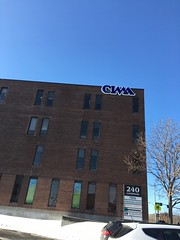Saturday, July 1, 2006
California Gov. Arnold Schwarzenegger signed a bipartisan state budget Friday that invests a record $55.1 billion in education – an increase of $3.1 billion this year and $8.3 billion over the last two years – and allocates $4.9 billion to create a budget reserve and to pay down the state’s debt early.
Schwarzenegger credited bipartisan cooperation in coming up with a budget he was willing to sign, and do it on time, a rarity in recent California politics.
“It’s amazing what can be accomplished when Democrats and Republicans work together in Sacramento,” said Schwarzenegger. “I want to thank the legislative leadership – Senators Don Perata and Dick Ackerman, Speaker Fabian Nunez and Assembly Republican Leader George Plescia – for all their hard work on the budget. We put politics aside and were driven by the overwhelming desire to do what’s best for the people of California.
“I am especially proud that the budget expands preschool, and returns art, music and physical education classes to our children,” he said.
State Superintendent of Public Instruction Jack O’Connell said he is pleased by the budget. “The budget passed by the Legislature brings welcome support to education in California, making good on past debts to our schools and investing in sorely needed classroom programs,” he said.
He had his own budget favorites: “I’m particularly pleased that the budget includes increased funding for school counselors, teacher professional development, programs targeted to helping students pass the high school exit exam, and expanded and improved student nutrition programs.
“While there are some priorities over which we may disagree, I applaud the Governor and the Legislature for a budget that makes education a top priority.”
Barbara E. Kerr, president of the 335,000-member California Teachers Association, also likes the direction of the new budget.“The timely approval of the new state budget is good news for our public schools and students,” she said. “School districts and teachers can now plan ahead. The nearly six percent cost-of-living-adjustment will allow local schools to restore funding to education programs that have been cut over the past few years and provide for salary increases.”
Still, Kerr, said, the budget doesn’t go far enough. “This budget is a down payment on the debt owed to our schools. Teachers will continue to work with the governor and the Legislature to ensure repayment of the $3 billion still owed to our schools under Proposition 98 and the lawsuit settlement agreement announced last month. That money will help our schools of greatest need reduce class sizes, improve teacher training and increase parental involvement.”
How the budget affects the New Haven Unified School District and James Logan High School, or the James Logan Courier, specifically is not yet clear.
State Treasurer Phil Angelides, who is running for governor against Schwarzenegger, liked the increased education funding, and praised his fellow Democrats in the legislature for that, but criticized the entire budget for being out of balance.
“On higher education, Democrats in the Legislature did the right thing, when the governor would not, and gained a $6 per unit rollback in community college fees,” he said in a statement. “That is a start. But the governor’s budget will still leave community college fees nearly double what they were just three years ago. And the budget will also leave untouched the fees at CSU and UC, which have increased by $2,000 and $5,000 respectively under Governor Schwarzenegger.”
Missing from the budget, Angelides said, is funding to expand health care for low-income children. Schwarzenegger “failed to get members of his own party to agree to a budget that funds health care for more kids from low-income families on the Healthy Families program regardless of the families’ immigration status. Compassion requires – and intelligent public health practice demands – that all people residing in California have access to adequate health care,” Angelides said.
Schwarzenegger credited a strong economy that increased state revenues for providing the cash to cover the increased expenditures and set aside a $2.1 billion reserve and an additional $2.8 billion for debt prepayment. Included in that is $1.42 billion for repaying borrowed funds earmarked by the voters for transportation projects aimed at reducing traffic throughout the state. The early debt payment and the reserve account for nearly 4.7 percent of the overall budget – the highest in 25 years.
Still, Angelides said, the budget is out of balance and the state is running up more debt. “Despite his repeated pledges to ‘cut up the credit card’ Governor Schwarzenegger has produced a budget that still leaves a $3.3 billion structural budget deficit for 2006-07 and more deficits for years to come,” Angelides said, “It is a budget thatwill continue to shift the burden of today’s deficits onto the backs of futuregenerations.”
The budget largely mirrors the May Revise, which has since prompted all three Wall Street credit rating agencies to upgrade the state credit rating, reducing the cost of state borrowing. One of the agencies, Fitch, Inc., cited “California’s continuing economic recovery, strong revenue performance and continued progress in reducing fiscal imbalance” when upgrading their rating on the state’s general obligation debt from A to A+ last month. Standard and Poor’s also raised its rating from A to A+ in May. Moody’s Investors Service raised its rating from A2 to A1 the same month.
Despite the improved credit ratings, Angelides said, the three rating agencies still have reservations about the state’s fiscal future. The agencies “have corroborated my warning and that of the Legislative Analyst that while state revenues have improved, California’s fiscal condition will remain insecure until the state produces balanced budgets,” he said.
Highlights of AB 1801, the Budget Act of 2006 by Assembly member John Laird (D-Santa Cruz), include:
Preschool through High School Education – The budget includes $100 million for the Governor’s targeted preschool initiative, which will make preschool available to every four year old living in a low-performing school district. $50 million of this funding will be used to build and improve preschool facilities. The budget also includes $645 million to fund physical education, arts and music programs. Overall, $11,264 will be spent on each student, an increase of $516 from the current year.
Higher Education – The budget allocates $19.1 billion from all sources for higher education and eliminates tuition and fee increases at UC and CSU. California, which already has the lowest community college fees in the nation, will further lower student fees from $26 per unit to $20, effective Spring 2007.
Law Enforcement – The budget includes an additional $196 million to support law enforcement efforts, including money to fund Sexual Assault Felony Enforcement teams, 500 GPS devices to track and monitor the highest-risk parolees and four new Gang Suppression Enforcement Teams. The budget also proposes the addition of 235 California Highway Patrol positions, includes $56.4 million to replace the CHP’s existing radio system and allocates $6.4 million to handle the increasing number of wireless 9-1-1 calls. Additionally, the budget includes a $20 million investment to strengthen efforts to fight methamphetamine trafficking and $6 million to create three new California Methamphetamine Strategy program teams.
Disaster Preparedness – The budget provides $220 million to enhance California’s ability to prepare for, mitigate and respond to emergencies, including money to strengthen public health response during a disaster. This includes preparations to prevent a pandemic influenza outbreak and expanding efforts to help local governments develop disaster preparedness plans.
Public Health – The budget includes $22.6 million for counties to perform outreach and enrollment activities to reach the 428,000 children who are eligible for Medi-Cal or the Healthy Families program but are not enrolled. The budget for the Healthy Families program also covers enrollment growth for 78,200 additional children.
Transportation – In addition, the Budget makes a substantial investment in improving California’s transportation system. It provides $1.4 billion to fully fund Proposition 42 for the second consecutive year, and it provides an additional $1.4 billion for the early repayment of past loans from Proposition 42, for a total of $2.8 billion. Of the $1.4 billion repayment, $440 million is designated for cities and counties for local road and street maintenance that would otherwise not be funded.
The budget is the first on time budget since 2000 and the fourth in the last 20 years. The 2006-07 budget’s general fund is $101.3 billion and total is $131.4 billion. For a more detailed overview of the budget, please visit www.dof.ca.gov.



